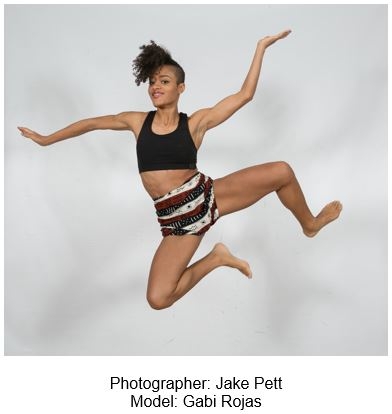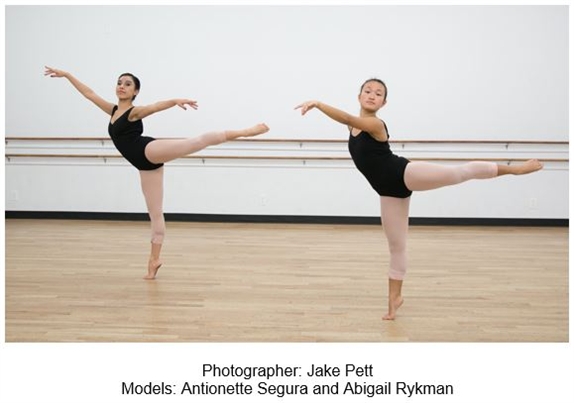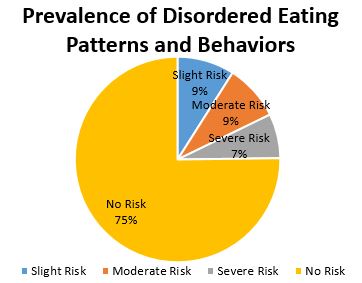Blog
Blog
What Dancers and Dance Teachers Need to Know about Motor Development, Motor Control, and Motor Learning: Part I
Authors: Donna Krasnow and Virginia Wilmerding
Dance training is at the heart of the art form of dance. All dancers can recall the teachers who had tremendous influence on their growth as young dancers and artists. The science known as motor behavior is having a stronger voice in helping teachers and dancers develop to the top level of their skills and artistry. Motor behavior is an umbrella term that represents three areas: motor development, motor control, and motor learning. This is the first of three posts that will describe these areas of motor behavior, and explain how teachers and dancers can benefit from this knowledge. This post will cover motor development.
Read ArticleWhat Dancers and Dance Teachers Need to Know about Motor Development, Motor Control, and Motor Learning: Part II
Authors: Donna Krasnow and Virginia Wilmerding
This is the second of three posts looking at the field of motor behavior and its impact on dance training. This post will deal with motor control. Motor control is the study of the nervous system, that is, the brain and all of the nerve cells communicating with the body, and how this system organizes and guides the muscles to create coordinate movement. It also explains how the senses such as vision and hearing, as well as information from the environment, are used to accomplish movement. The study of motor control can yield valuable tools for the dancer and the teacher.
Read ArticleWhat Dancers and Dance Teachers Need to Know about Motor Development, Motor Control, and Motor Learning: Part III
Authors: Donna Krasnow and Virginia Wilmerding
This is the third of three posts looking at the field of motor behavior and its impact on dance training. This post will deal with motor learning, which looks at the changes in motor skills caused by experience and practice, rather than development as described in a previous post. These changes can only be observed by changes in performance and are relatively permanent. This area of motor behavior is probably the most useful for dancers and teachers.
Read ArticleCreating the Annual “picture”
The Annual Meeting is the highlight of the IADMS calendar. The Program Committee (PC) has the complex task of piecing together the various jigsaw puzzle pieces in order to produce a scientific conference that is both educational and enticing. The committee is made up of four long standing IADMS members: Ginny Wilmerding, Marika Molnar, David Weiss and Alexander McKinven. The mix of professions, nationalities, backgrounds and personal interests means that each of us has a unique perspective on how the Annual Meeting should evolve. Every Annual Meeting has its own character, with many variables, but the PC strives to develop each one and make it even better than the last.
Read ArticleDancers - More Power To You!: Video from the 2014 Annual Meeting
Presented by: Jatin P. Ambegaonkar
Watching a dancer perform can be breathtaking and fun. Being a dancer is hard! This is because dancer’s movements often involve jumping and landing. To safely perform these explosive movements, dancers need good power in their lower body (Lower Body Power - LBP). Understandably, 70% of all dance-related injuries are to the lower body. Dancers are also supposed to have better balance than non-dancers. In athletics, sprinters with better strength and power and balance have better performance. In modern dance, aesthetic performance and jump ability are positively correlated to each other. However, research investigating potential interrelationships between LB power and balance among dancers is lacking.
Read ArticleA Welcome Message from the 2015 Annual Meeting Host Committee: Top 10 things to do on your trip to Pittsburgh
Author: Andrea Kozai on behalf of the Host Committee
The Host Committee for the 25th Annual Meeting is incredibly excited to welcome you to Pittsburgh, Pennsylvania! Pittsburgh is a beautiful metropolis in the heart of Steel Country, and has transformed itself from an industrial powerhouse of yesteryear to a vibrant economy based in technology, medicine, and academics. There is lots to do and see, so we thought it would be helpful to share a list of our favorite parts of this city.
Read ArticleThe female athlete triad in college dance students: Video from the 2014 Annual Meeting
Presented by: Amy Avery and Jane Baas
Diet and exercise is an important factor in addressing the health related problems of the estimated sixty seven percent of American adults who are overweight or obese.1 However, diet and exercise can also become a potential problem when mixed with a strong desire to become or maintain a very thin physique. Eating disorders can result from these desires, where harmful behaviors are used to lose weight or maintain a thin appearance.2 When taken to the extreme, the practice of excessive calorie restriction and expenditure can have severe health implications.3
Read ArticleDo Dance Professionals think about their health? Video from the 2014 Annual Meeting
Authors: Derrick D Brown, Matthew Wyon
Although it is recognised that ingesting quality macronutrients enhance dance training and performance, nutrition-related knowledge discrepancies and dietary inadequacies are still prevalent amongst student and elite dancers.
Read ArticleNutrition Research should drive advice and practice: which nutrients should the dancer be updated on and why: Video from the 2014 Annual Meeting
Presented by: Jasmine Challis
This blog looks at the information I presented at the 2013 IADMS conference in Seattle. It looks at an area where there is a lot of controversy and tries to steer a research based path to advise the dancer on current best practice considering the current evidence.
Read ArticleInjury Prevention Research: Investigating patellar tendon development in adolescent dancers
Author: Aliza Rudavsky on behalf of the IADMS Education Committee
Our final injury prevention installment comes from Aliza, reporting early findings of a piece of research which has investigated patellar tendon development amongst adolescent dancers.
Read Article




 BACK
BACK